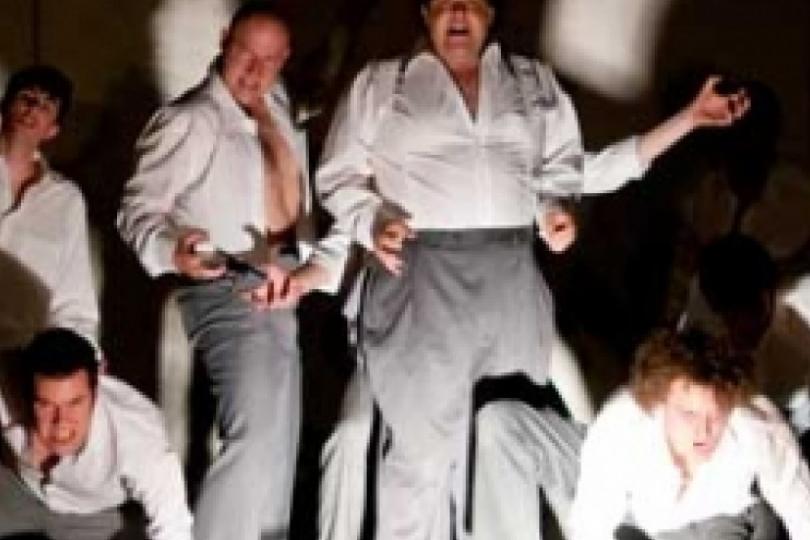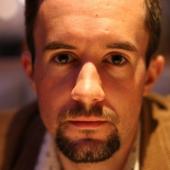Whether we recognize it consciously or not, a large part of our time socializing is spent carefully cultivating our image, and through that image, our self-perception. I don’t mean to say that everyone is a walking poseur, trying desperately to seem as they wish other people to see them, but that a fundamental fact of our human social existence is getting others to see us as we see ourselves, or as we wish we were. Here’s an example particularly relevant to the Twin Cities theater community: inevitably, at some cocktail party or reception, everyone’s favorite subject comes up at some point – loving to hate the Guthrie. A good Guthrie-bashing session takes, in my experience, between ten minutes and half an hour, depending on the participants, but at some point someone will say – and I have yet to experience a G-bash without this – “Yeah, I don’t really go to the Guthrie. It’s just not worth it.”
What are they really telling us in this moment? I think it’s much more than where they do or do not choose to sit in the dark; I think it is a presentation of their own self-perception. What they are telling us is shorthand for, “My tastes are more sophisticated than the dog-and-pony show over on the river.” For those of us in the theater community, part of our self-perception, and thus part of the image we wish to portray, involves curating our theatrical lives as audience members. Very few people really see everything in town. Most of us make choices to curate our artistic lives, which we in turn incorporate into our lives through our outward image at cocktail parties with friends, which reinforces our self-perception of who we are as theater artists.
Choosing how to play
I have known since September 2011 that the 2011 – 2012 season was going to be my last in the Twin Cities. I came to attend grad school at the U, and was lucky enough to participate in a truly great theatrical community, but sometimes we just know that the time is right to move on. And so this season, rather than adopt the I’ll-see-everything-before-I-go model that some people do when they are preparing to leave a place, I was particularly selective in curating my theatrical life. No doubt this had to do with my self-perception and image: I wanted to both feel extremely well-informed about the community I was leaving, and give myself a stellar season to remember when I was gone. I’m certain I missed some truly amazing performances and shows – one can always afford to be more open and generous, especially in the theater community – but I’m equally certain that my final season left me feeling very satisfied and very proud to have lived in the Cities.
Some of my season highlights included: a sumptuously designed and acted Les Liaisons Dangereuses at the Theater Garage; phenomenal performances in Buzzer at Pillsbury House Theatre; Tracie Bennett lighting up the stage in End of the Rainbow at the G; a particularly menacing The Birthday Party at the Jungle; the most accurate and sympathetic depiction of blue-collar people I have seen in a long time in The Mill, produced by Workhaus Collective; and, of course, the long-awaited return to America of Jomama Jones in Radiate Live!, also at Pillsbury House Theatre.
There are others, of course; even a carefully-curated season is a long one if you really love sitting in the dark. But when it comes to what has stuck with me all season long, and what continues to excite me the most, I keep returning to a unique and thrilling experience at the old Hollywood Theater in Northeast Minneapolis, where I saw Savage Umbrella’s production of The Ravagers. A truly magnificent example of a compelling adaptation – in this case, from a variety of tragedies by Aeschylus, deftly handled by company members Blake E. Bolan and Laura Leffler-McCabe – and a model to be emulated for how to use a theatrical space to its fullest potential, The Ravagers filled me with excitement and dread when I saw it in November, and it continues to excite me as I contemplate it eight months later. It is, in addition, a story about the conflict between self-perception and the image a person projects into the world.
A world gone mad
In the dark world of the play, the audience is caught between a war that has divided a kingdom. On one side is Danaus, a paranoid and maniacal man, who has trained his 50 daughters to obey him completely and unquestioningly. The opening scenes of his daughters’ ritualistic lives – eating this way, washing that way, getting this lesson today, the next lesson tomorrow – was choreographed in such a way as to almost lull the audience into a trance. The decaying environment of the Hollywood Theater brought to mind images of the desolate cities of North Korea, and Scott Keely’s Danaus reminded me of O’Brien from 1984, deploying casual cruelty and hard-won love so strategically that we felt as emotionally manipulated and abused as his daughters.
On the other side, a side we never see but which we are led to believe is not so stark as the abandoned theater we inhabit, is Danaus’ brother Aegyptus, whose 50 sons are set to marry Danaus’ 50 daughters and reunit the fractured kingdom. Danaus, however, will not see his carefully controlled grip on power end, and so brainwashes his daughters to murder their husbands on their wedding night. He places his faith in his eldest daughter, Hypermnestra (played with great aplomb by Leffler-McCabe), to train the others to obey him, train them to lull their husbands into false senses of security, and train them to carry out the gruesome murders, each according to its own particular plan. Yet Hypermnestra’s outward image as her father’s enforcer does not conform to her self-perception: for years she has been secretly exchanging letters with her cousin (and future husband), Lynceus, through a crack in the wall; she loves him, and she has no intention of killing him. Our knowledge of this forms the central psychic tension in the play: will Hypermnestra reconcile her inner life with her outward persona?
Staging mass murder
The second act opened with the gruesome murders in repertory. The audience was led from the theater into the lobby, where three of the murders occurred simultaneously in different areas of the space – one in the ticket booth, another halfway down a flight of stairs, another where the huge double doors used to open to the street. As you watched one of the scenes unfold, you could hear the others taking place as well, before moving on to the next sexually-charged moment of violence – an unsettling experience, but a gratifyingly theatrical one. After we had seen all three murders, the rest of the cast descended into the lobby area and we witnessed more scenes of murder and betrayal; to re-enter the theater, we had to walk through the corpses of dead men and the crumpled bodies of weeping women. It was an experience I will not forget.
The Ravagers was a striking example of a true Gesamtkunstwerk in which every element of the show contributed to the total experience of that show. The decaying Hollywood, the glare of exposed lighting, the drab costumes, all came together to create a show that felt like a true theatrical event. In the end, Hypermnestra spared her husband and betrayed her father; she revealed to the world her inner life and made it manifest in the image she projected. Seeing it in November and thinking back on it again now, I can’t help but thinking that this was really a theater person’s show. It continues to reward attention to detail and it embraced, well… theatricality.
And that, in a sense, is part of my self-perception as I leave Minnesota to embark on my next adventure. The Twin Cities is where I came into my own as an audience member and as a theater artist, and for that reason I will always hold a special place in my heart for the Cities. Savage Umbrella’s motto is “Savage Umbrella makes theater; we can’t help or stop ourselves.” With shows like this, we, the audience, can’t stop watching.
Theater – really good theater – makes you feel alive even as you are literally stepping over dead bodies. I experienced more than my fair share of really good theater in my time in the Twin Cities, but also some stinkers along the way. Shows like The Ravagers from companies like Savage Umbrella will cause me to look back on my time here with pleasure, pride, and satisfaction. We have a good thing going here in Minnesota; something to be proud of and to enjoy, and also to protect and cultivate. So, until we meet again – enjoy the show.
Matt McGeachy
Matt McGeachy is a Twin Cities-based dramaturg and writer. Educated at the University of Toronto and the University of Minnesota, he has worked in dramaturgy at the Guthrie Theater, The Playwrights' Center, and the Kennedy Center New Play Dramaturgy Intensive. He was previously theater critic for MONDO Magazine in Toronto.





